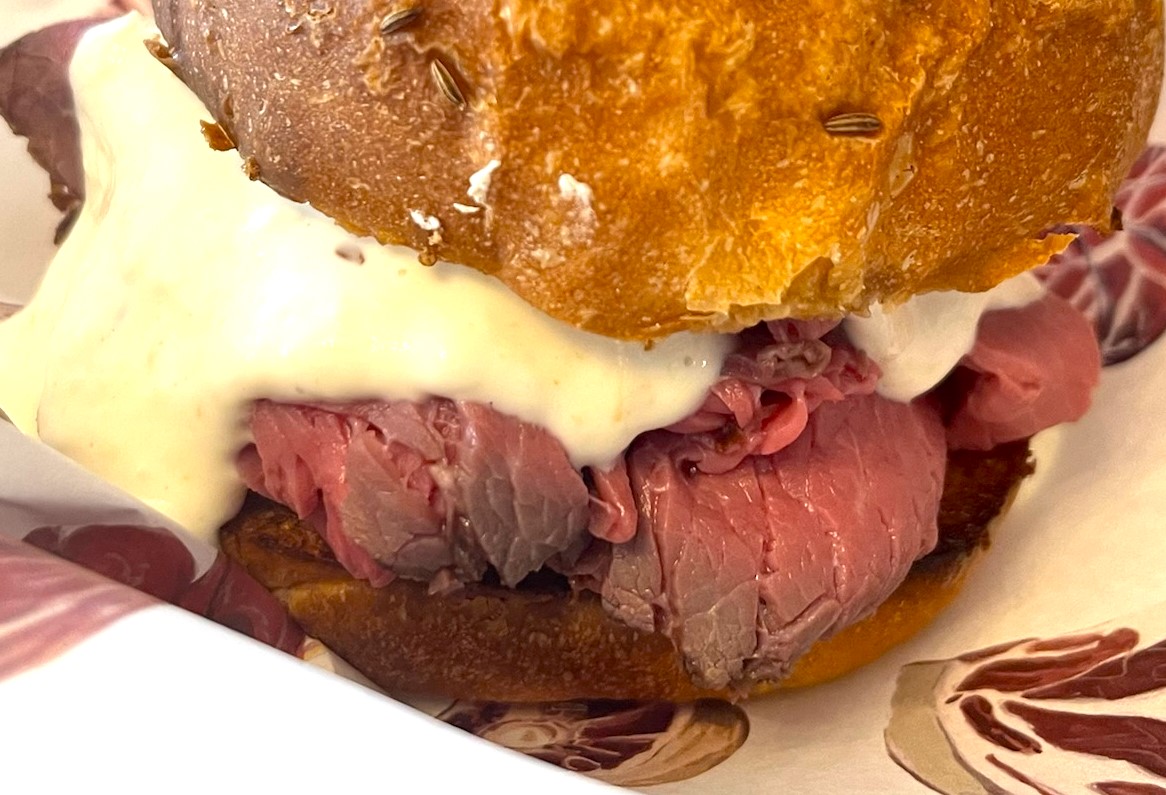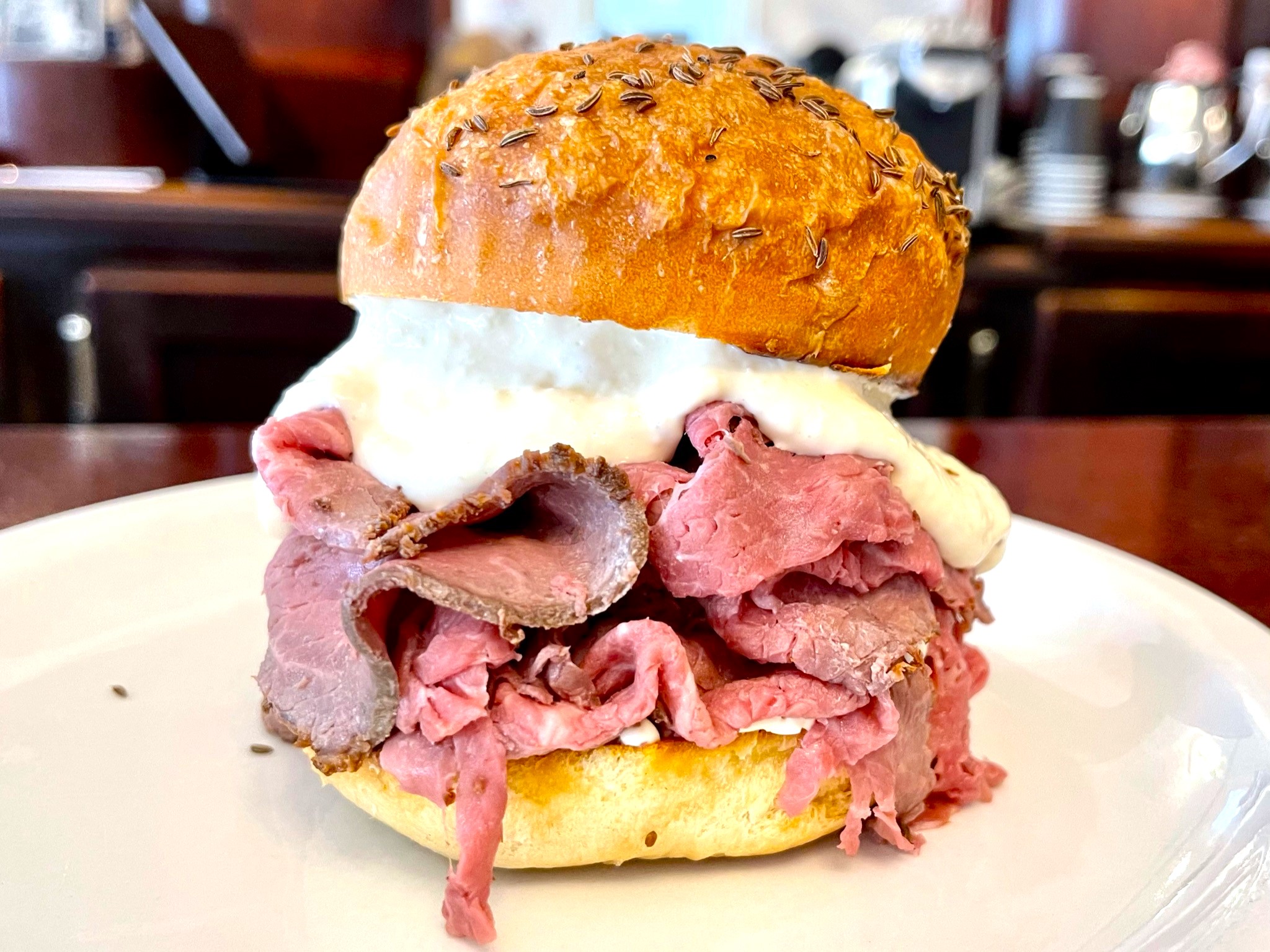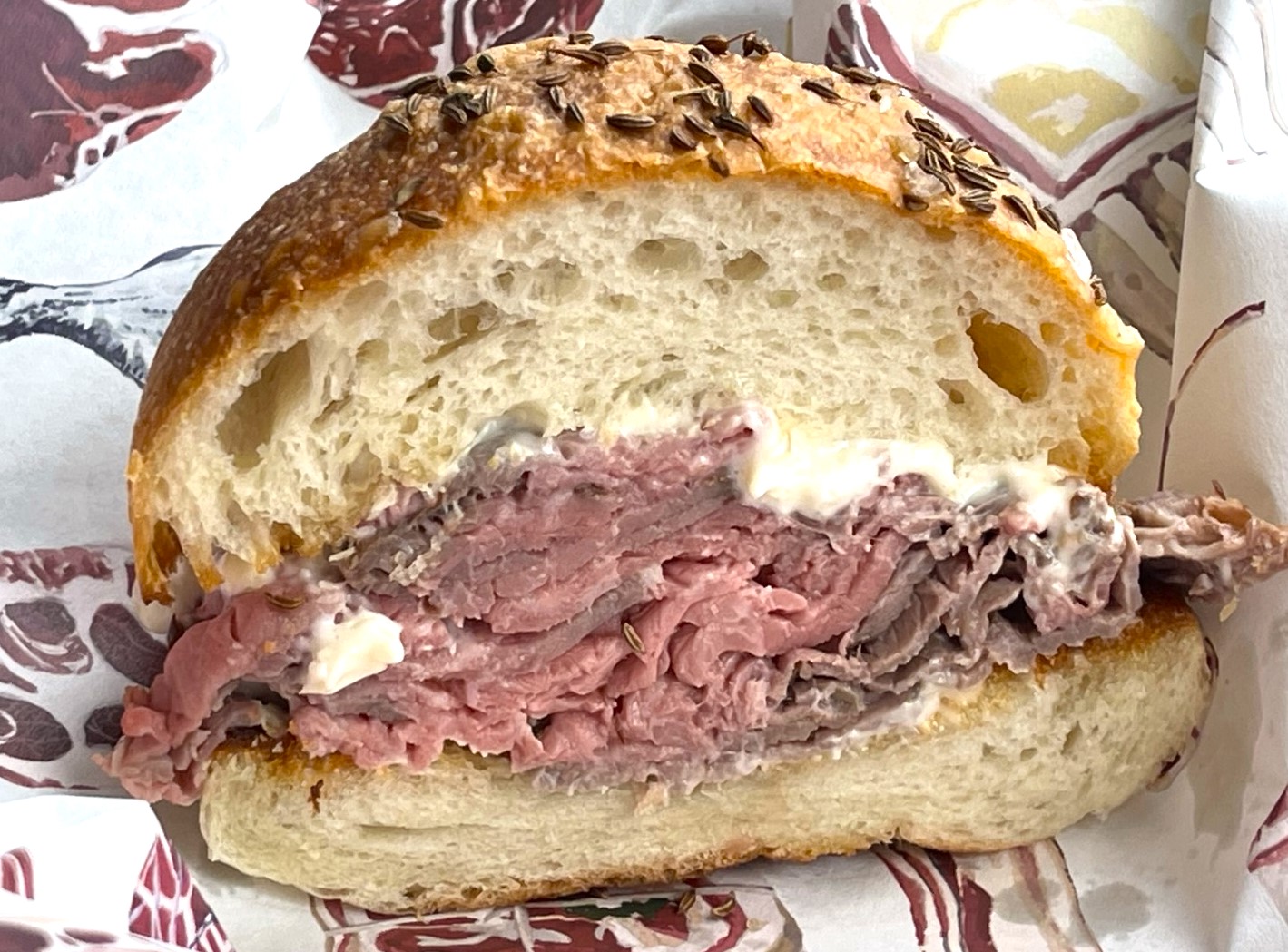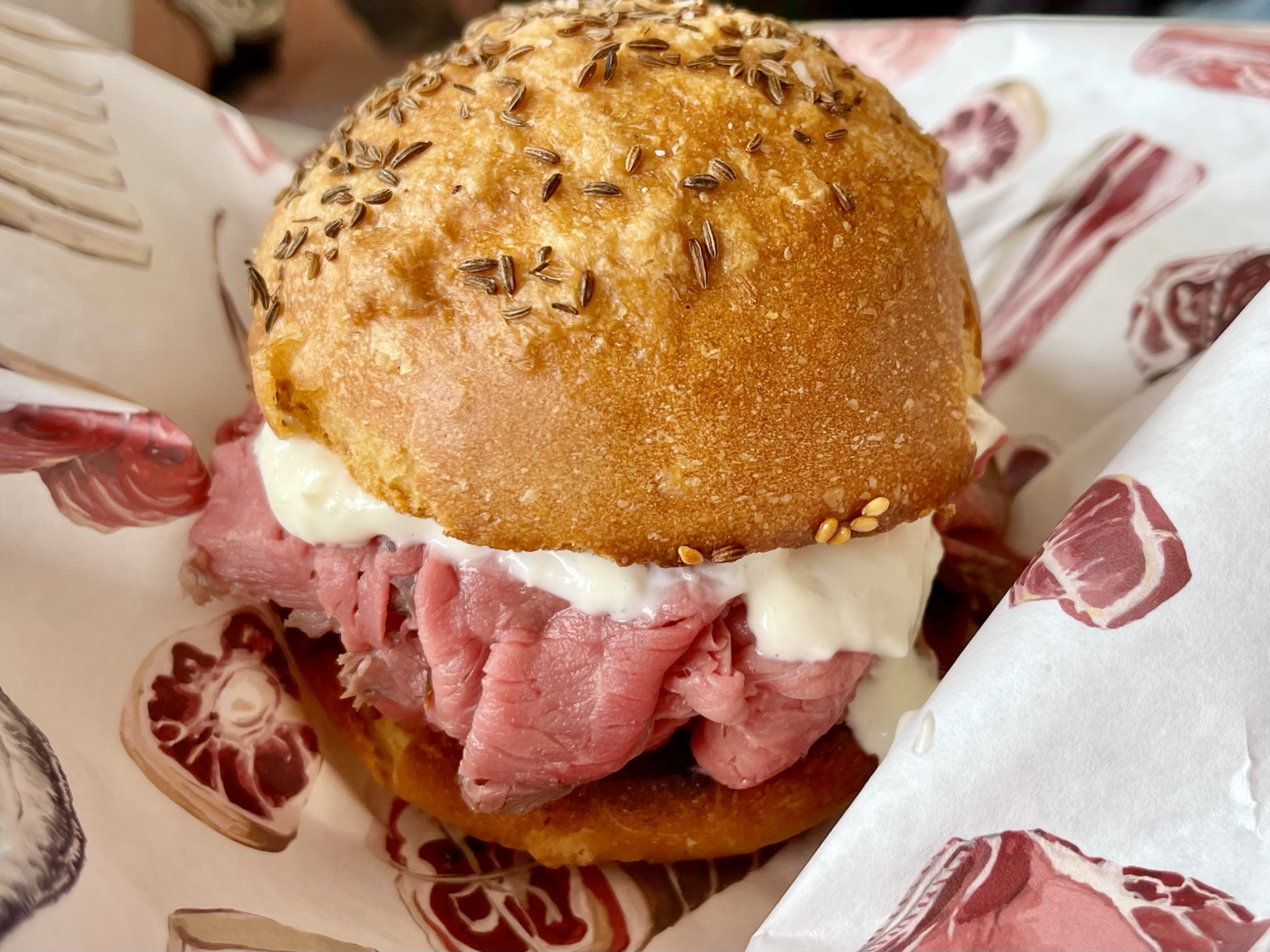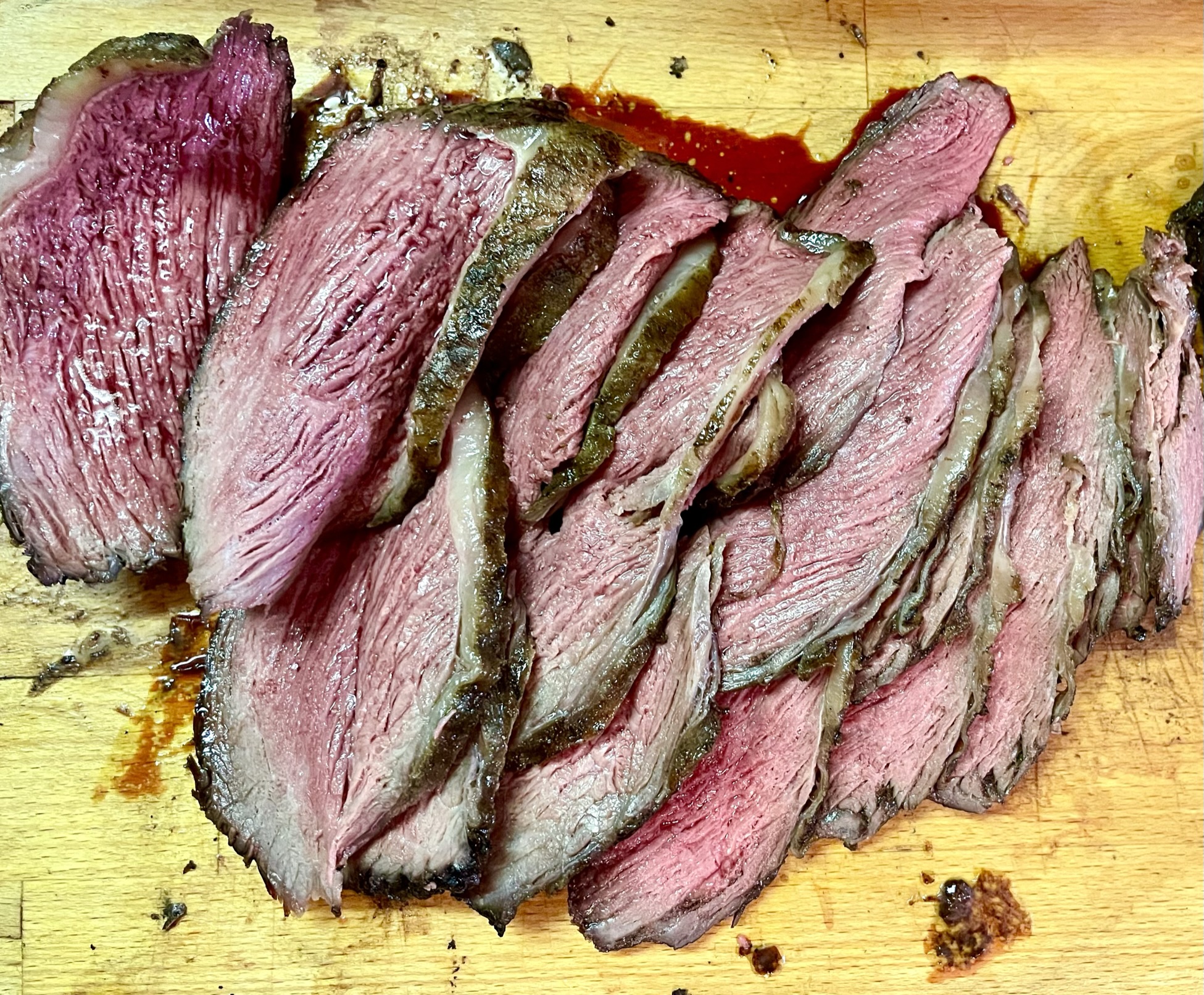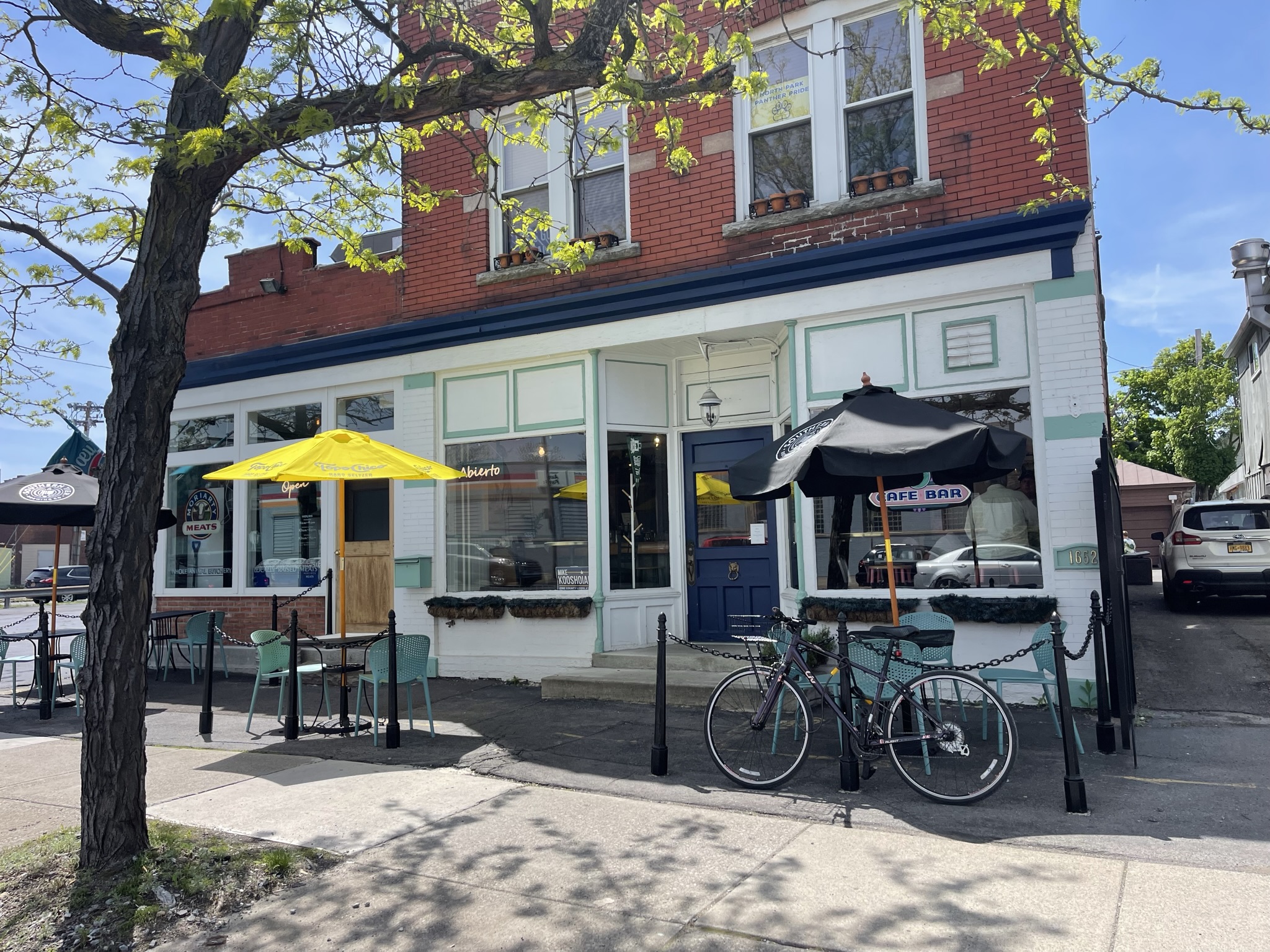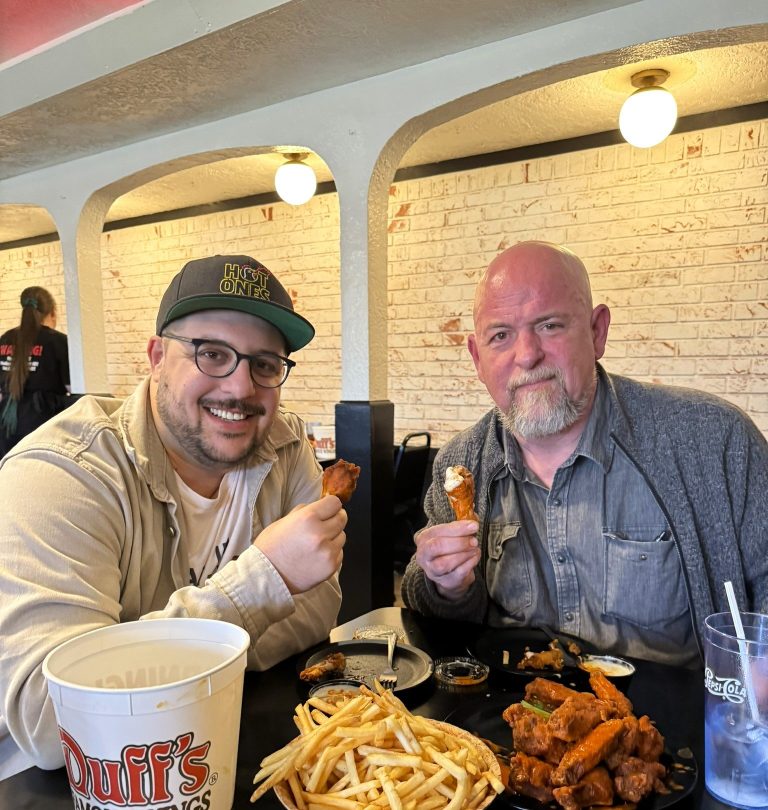How a Buffalo boy apprenticed in France to learn how to cut animals and give his hometown a better beef on weck
Beef on weck, shaved roast beef on a roll crowned with rock salt and caraway seeds, is Buffalo soul food.
My beef on weck initiation started at 16, the first time I pulled up a stool at Anacone’s Inn, 3178 Bailey Ave. As a University at Buffalo freshman, roommate Joel Resnikoff led me on a hike south on Bailey Avenue from our Main Street dormitory, McDonald Hall.
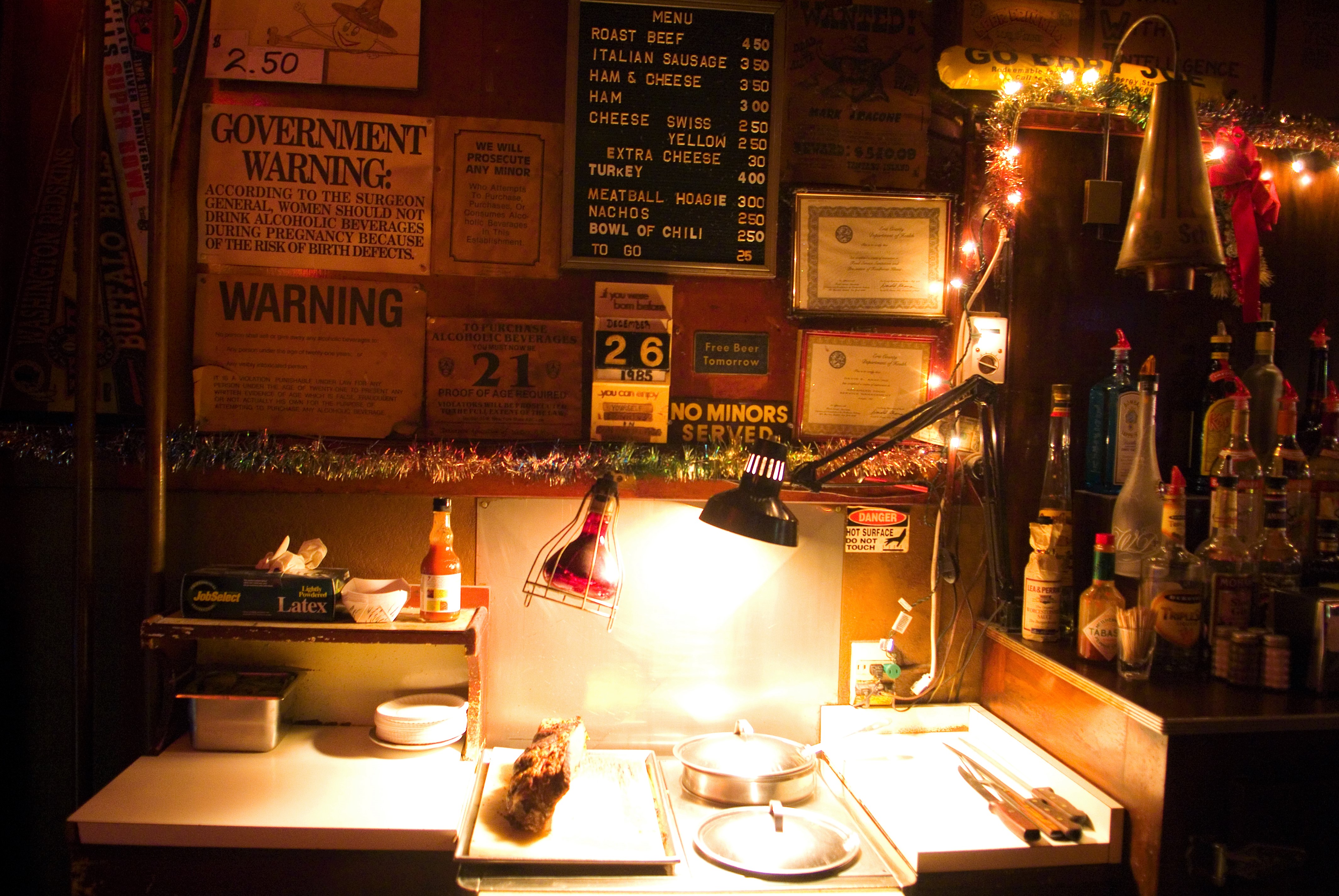
There, I watched Mark Anacone slice rosy roast beef with a knife sharpened so many times its remaining blade was not much wider than a scalpel. Dip the beef in the jus well, onto the roll, and hand it over on a paper plate with a sheaf of dill pickle slices tucked under the roll, and a jar of horseradish.
Eyes watering, I thought it was the most magnificent sandwich I’d ever eaten.
Forty years later, Anacone’s only a fond memory, not just for me, but enough fans to have a Facebook group to share its memories.
Chasing the beef on weck dragon in Buffalo has gotten considerably harder. Having my standards set at Anacone’s means never being content with grey beef, which makes some of the most popular Buffalo beef on weck temples no-go zones when I’m getting my weck on.
Speaking of which, an appalling number of Buffalo restaurateurs buy plain rolls and attempt to affix rock salt to them, poorly. Just because you superglue a BMW emblem to an automobile doesn’t make it a performance European sportscar. Sometimes beef on weck arrives bearing no caraway seeds whatsoever, or worse, another seed that looks similar, such as fennel. Kummelweck is german for caraway roll, kummel being caraway.
Amid the disappointments, today’s Buffalo beef on weck landscape still has standards that slice their own beef, rosy on request, like Schwabl’s and Charlie the Butcher. Then, I finally found one beef to rule them all, thanks to Tom Moriarty.
Moriarty was a junior at Canisius High School when he went to Spain as an exchange student. That inspired him to go to France to enroll in butcher school. During his apprenticeship, learning how to take animals apart muscle by muscle instead of running them through bandsaws American style, Moriarty worked in a bed and breakfast, watching and learning.
With Caitlin, his wife and business partner, they opened Moriarty Meats in 2018, cutting local animals French style and making an array of butcher shop items like sausages, stocks, and stews. In 2020, the Moriartys reopened the expanded butcher shop at 1650 Elmwood Ave., where they live upstairs.
More locally raised animals are becoming available as retail cuts across the region. That’s good news for farmers and consumers. It’s also notable that Moriarty is the only shop in Western New York that cuts whole beef, pigs, and lamb on a weekly basis, turning those animals into counters and freezers full of products.
Between shop and bar, Moriarty buys more than a ton of local meat animals per week from New York farmers.
In late 2021, Cafe Bar Moriarty opened next door. The benefits of a restaurant run by a trained career butcher are most apparent in Moriarty’s approach to Buffalo’s most honored sandwich.
Eat the “boeuf on weck” at Moriarty’s, and ponder the benefits of having a butcher cook your meat. Tender enough to bite clean, horseradish mayo more luxurious but still cleaning out sinuses, it is a triumph to the last bite.
Purists may object to mayonnaise as an interloper, an innovation that ruins the traditional profile. Standards change, too, sometimes for the better. I bet people gave static to the first Fritz or Jurgen to dollop horseradish on pristine beef.
I’ll pay $14 to get that beef on weck feeling back. If that’s too much for you to pay for a beef on weck, on principle, I hope you enjoy the flavor of those extra dollars in your wallet, and leave the boeuf on weck to others.
The rolls are from Extra Extra Pizza, the Brooklyn-style slice shop at 549 W. Utica St., as Moriarty likes to buy bread from other local outfits, keeping their bakery budget local.
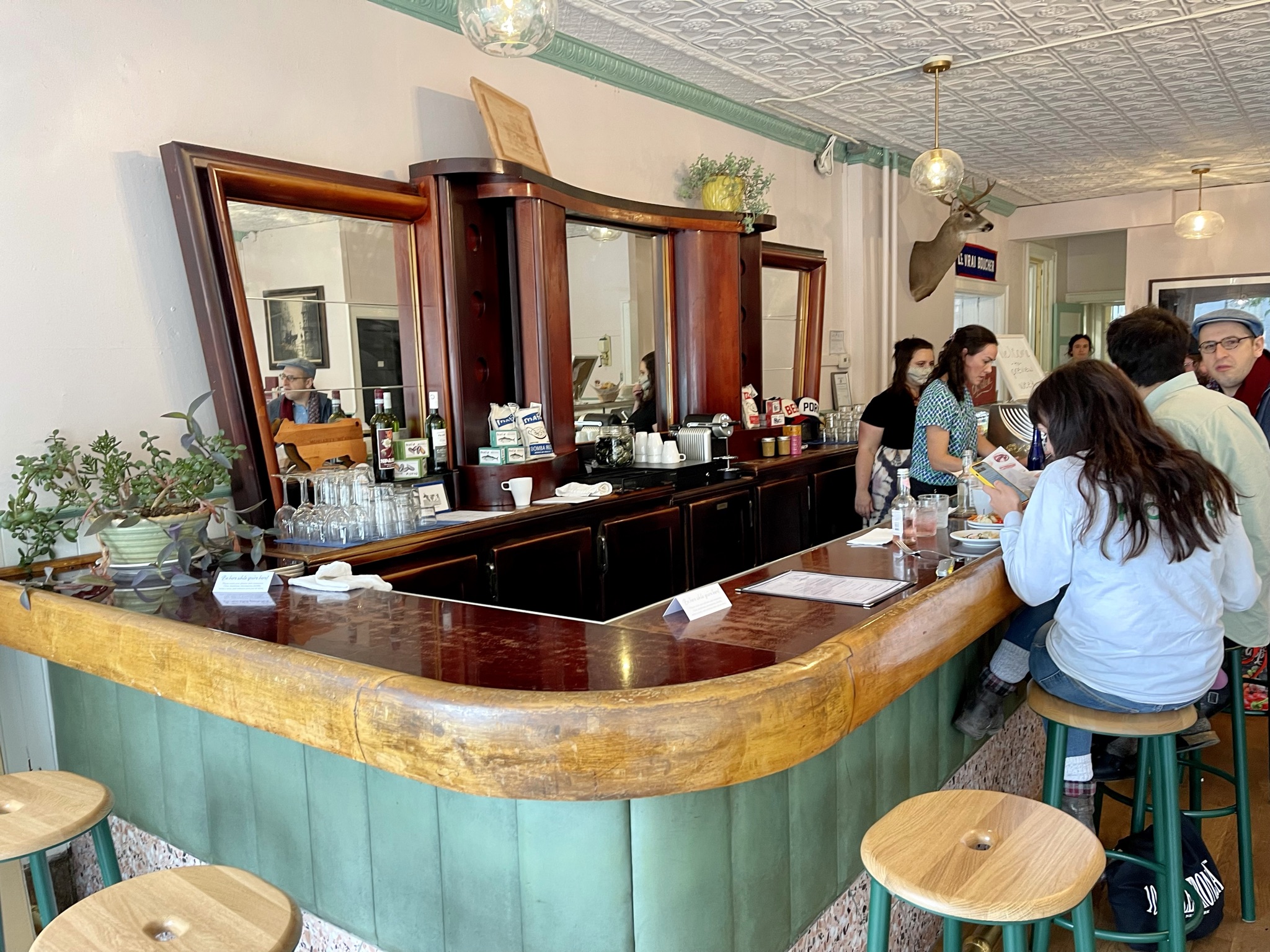
There’s a lot to draw customers to Moriarty, to be fed well, or feed their own culinary appetites. That’s where I go for picanha, the cut of top sirloin rimmed with fat so beloved by Brazilians, but not available at most American meat outlets.
That’s where I send people looking for guanciale, cured pork jowl. Much to the relief of an exchange student from Italy, last year I knew where he could find what he needed to make his carbonara and amatriciana taste like home.
At Cafe Bar Moriarty, I never pass up a chance at the potato croquettes, fried in beef tallow, or cod with white beans and parsley. Chances are, you’ll find your own favorites. It is a butcher shop restaurant, so vegans and vegetarians may find appropriate dishes, but that’s not the aim of a menu written with the orderly dispersal of butcher shop odds and ends in mind.
If you eat meat, head to a place that hooks you up with the good stuff.
Moriarty Meats and Cafe Bar Moriarty
1650 Elmwood Ave., moriartymeats.com, 716-239-8465
Hours: Wednesday: 11 a.m.-4 p.m. shop, 11 a.m.-2 pm cafe
Thursday: 10 a.m.-6 p.m. shop, cafe 11 a.m.-4 p.m.
Friday: 10 a.m.-6 p.m. shop, cafe 11 a.m.-4 p.m.
Saturday: 10 a.m.-4 p.m. shop, cafe 11 a.m.-4 p.m.
#30#

